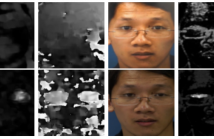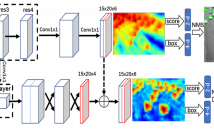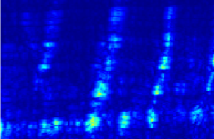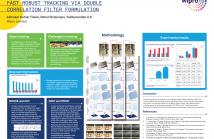
- Read more about INVESTIGATION IN SPATIAL-TEMPORAL DOMAIN FOR FACE SPOOF DETECTION
- Log in to post comments
This paper focuses on face spoofing detection using video. The purpose is to find out the best scheme for this task in the end-to-end learning manner. We investigate 4 different types of structure to fully exploit the raw data in its spatial-temporal domain, which are the pure CNN, CNN with 3D convolu-tion, CNN+LSTM and CNN+Conv-LSTM. Moreover, anoth-er stream built on optical flow is also used, and with a proper fusion method, it can improve the accuracy. In experiments, we compare schemes on the raw data in single stream and fusion methods with optical flow in two streams.
- Categories:
 15 Views
15 Views
- Categories:
 11 Views
11 Views
- Read more about Depth Super-resolution with Deep Edge-inference Network and Edge-guided Depth Filling
- Log in to post comments
- Categories:
 44 Views
44 Views
- Read more about Unbiased Distance based Non-local Fuzzy Means
- Log in to post comments
- Categories:
 9 Views
9 Views
- Read more about UNIVERSAL APPROACH FOR DCT-BASED CONSTANT-TIME GAUSSIAN FILTER WITH MOMENT PRESERVATION
- Log in to post comments
- Categories:
 32 Views
32 Views
- Read more about Fast Vehicle Detection with Lateral Convolutional Neural Network
- Log in to post comments
Fast Vehicle Detection with Lateral Convolutional Neural Network
- Categories:
 32 Views
32 Views
- Read more about FAULT DETECTION USING ATTENTION MODELS BASED ON VISUAL SALIENCY
- Log in to post comments
In this paper, we present an approach for detecting faults within seismic volumes using a saliency detection framework that employs a 3D-FFT local spectra and multi-dimensional plane projections. The projection scheme divides a 3D-FFT local spectrum into three distinct components, each depicting variations along different dimensions of the data. To detect seismic structures oriented at different angles and to capture directional features within 3D volume, we modify the center-surround model to incorporate directional comparisons around each voxel.
- Categories:
 13 Views
13 Views
- Read more about FAST ROBUST TRACKING VIA DOUBLE CORRELATION FILTER FORMULATION
- Log in to post comments
Over the past few years, fast and robust trackers based on Kernelized Correlation Filters have shown top notch performance on the Visual Object Tracking challenge. However there is still scope for obtaining higher performance through the use of reasonable approximations that can easily be shown to work through empirical methods. We study some variants derived from the Discriminative Scale Space Tracker and show significant improvement in tracking performance.
- Categories:
 56 Views
56 Views
- Read more about PIPA : A New proximal Interior Point Algorithm for Large-Scale Convex Optimization
- Log in to post comments
Interior point methods have been known for decades to be useful for the resolution of small to medium size constrained optimization problems. These approaches have the benefit of ensuring feasibility of the iterates through a logarithmic barrier. We propose to incorporate a proximal forward-backward step in the resolution of the barrier subproblem to account for non-necessarily differentiable terms arising in the objective function.
- Categories:
 30 Views
30 Views
- Read more about STATISTICAL EVALUATION OF VISUAL QUALITY METRICS FOR IMAGE DENOISING
- Log in to post comments
This paper studies the problem of full reference visual quality assessment of denoised images with a special emphasis on images with low contrast and noise-like texture. Denoising of such images together with noise removal often results in image details loss or smoothing. A new test image database, FLT, containing 75 noise-free ‘reference’ images and 300 filtered (‘distorted’) images is developed. Each reference image, corrupted by an additive white Gaussian noise, is denoised by the BM3D filter with four different values of threshold parameter (four levels of noise suppression).
- Categories:
 7 Views
7 Views